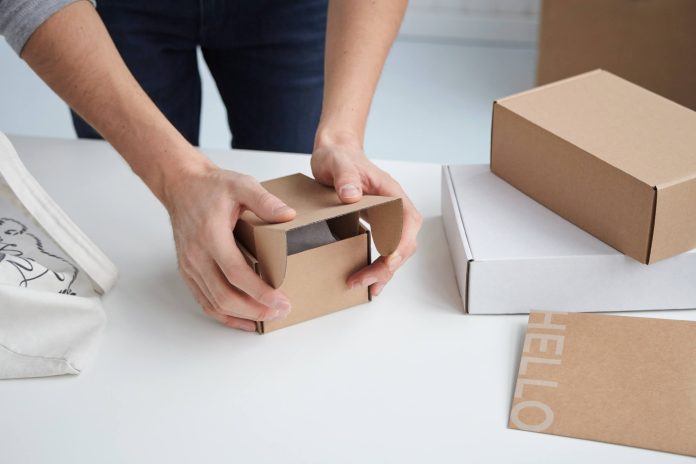Packaging is often the first point of contact between a consumer and a product, making it a crucial element of the marketing mix. In today’s competitive marketplace, selecting the perfect box for your product can make all the difference in attracting customers and driving sales.
Understanding the Importance of Packaging
Packaging serves multiple purposes beyond simply containing and protecting a product. It plays a significant role in brand identity, differentiation, and consumer perception. A well-designed package not only catches the eye but also communicates essential information about the product and brand.
Factors to Consider When Selecting Packaging
Material
The choice of packaging material is critical as it affects not only the appearance but also the functionality and environmental impact of the packaging. Common materials include cardboard, plastic, metal, and glass, each with its own set of advantages and limitations.
Size and Dimensions
The size and dimensions of the packaging must be carefully considered to ensure a snug fit for the product while minimizing excess space and materials. Oversized packaging can lead to increased shipping costs and environmental waste, while undersized packaging may compromise product safety and integrity.
Design and Branding
Packaging design plays a crucial role in attracting consumers’ attention and communicating the brand’s identity and values. Eye-catching graphics, colors, and typography can help products stand out on store shelves and create a memorable brand experience.
Functionality
Beyond aesthetics, packaging must also be functional and practical. Ease of opening, resealability, and protective features are all factors that contribute to the overall user experience and satisfaction.
Types of Packaging Boxes
Corrugated Boxes
Corrugated boxes are versatile, cost-effective, and widely used for shipping and transportation purposes. They offer excellent protection against impacts and are available in various sizes and configurations.
Folding Cartons
Folding cartons are ideal for retail packaging and display purposes. They are lightweight, customizable, and suitable for high-quality printing, making them a popular choice for consumer goods such as cosmetics, pharmaceuticals, and food products.
Rigid Boxes
Rigid boxes, also known as setup boxes, are premium packaging options that exude luxury and sophistication. They are sturdy, and durable, and can be customized with embossing, foil stamping, and other decorative finishes.
Holographic Boxes

Holographic boxes are a modern and attention-grabbing packaging option that utilizes holographic films to create dazzling visual effects. They are particularly popular in industries such as cosmetics, fashion, and electronics, where aesthetics play a significant role in purchasing decisions.
Matching Packaging to Product
The packaging should be tailored to the specific needs and characteristics of the product it contains. Considerations such as fragility, perishability, and shelf life should inform the choice of packaging material, design, and protective features.
Cost Considerations
While packaging is an essential investment in brand image and product protection, cost considerations cannot be overlooked. Balancing quality, aesthetics, and affordability is key to achieving the desired outcome without exceeding budget constraints.
Sustainability and Eco-Friendly Options
With increasing consumer awareness of environmental issues, there is a growing demand for sustainable and eco-friendly packaging materials. Options such as recyclable materials, biodegradable plastics, and minimalist designs can help reduce the environmental footprint of packaging while still delivering on functionality and aesthetics.
Customization and Personalization
Customization and personalization are powerful tools for creating a unique and memorable brand experience. From custom printing and embossing to personalized messaging and branding, there are endless possibilities for tailoring packaging to resonate with target consumers.
Packaging for Different Industries
Different industries have unique packaging requirements and challenges. Understanding the specific needs and preferences of the target market is essential for designing packaging solutions that effectively communicate value and drive sales.
Successful Packaging Strategies
Examining real-world examples of successful packaging strategies can provide valuable insights and inspiration for designing effective packaging solutions. Case studies highlight innovative approaches, best practices, and lessons learned from notable brands across various industries.
Tips for Effective Packaging Design
Effective packaging design is a combination of art and science. Incorporating principles of graphic design, psychology, and marketing can help create packaging that not only looks great but also resonates with consumers and drives purchase intent.
Testing and Prototyping
Testing and prototyping are essential steps in the packaging design process to ensure functionality, durability, and consumer satisfaction. Conducting focus groups, usability tests, and mockups can help identify potential issues and refine the packaging design before production.
Future Trends in Packaging
As consumer preferences and market dynamics continue to evolve, so too will packaging trends and innovations. From smart packaging technologies to sustainable materials and interactive experiences, the future of packaging holds endless possibilities for brands looking to differentiate themselves and engage consumers.
Final Words
Selecting the perfect box for your product is a multifaceted endeavor that requires careful consideration of various factors, from material and design to functionality and cost. By understanding the importance of packaging, exploring different types of packaging boxes, and matching packaging to product characteristics and consumer preferences, brands can create packaging solutions that captivate audiences, drive sales, and build lasting connections with consumers.


